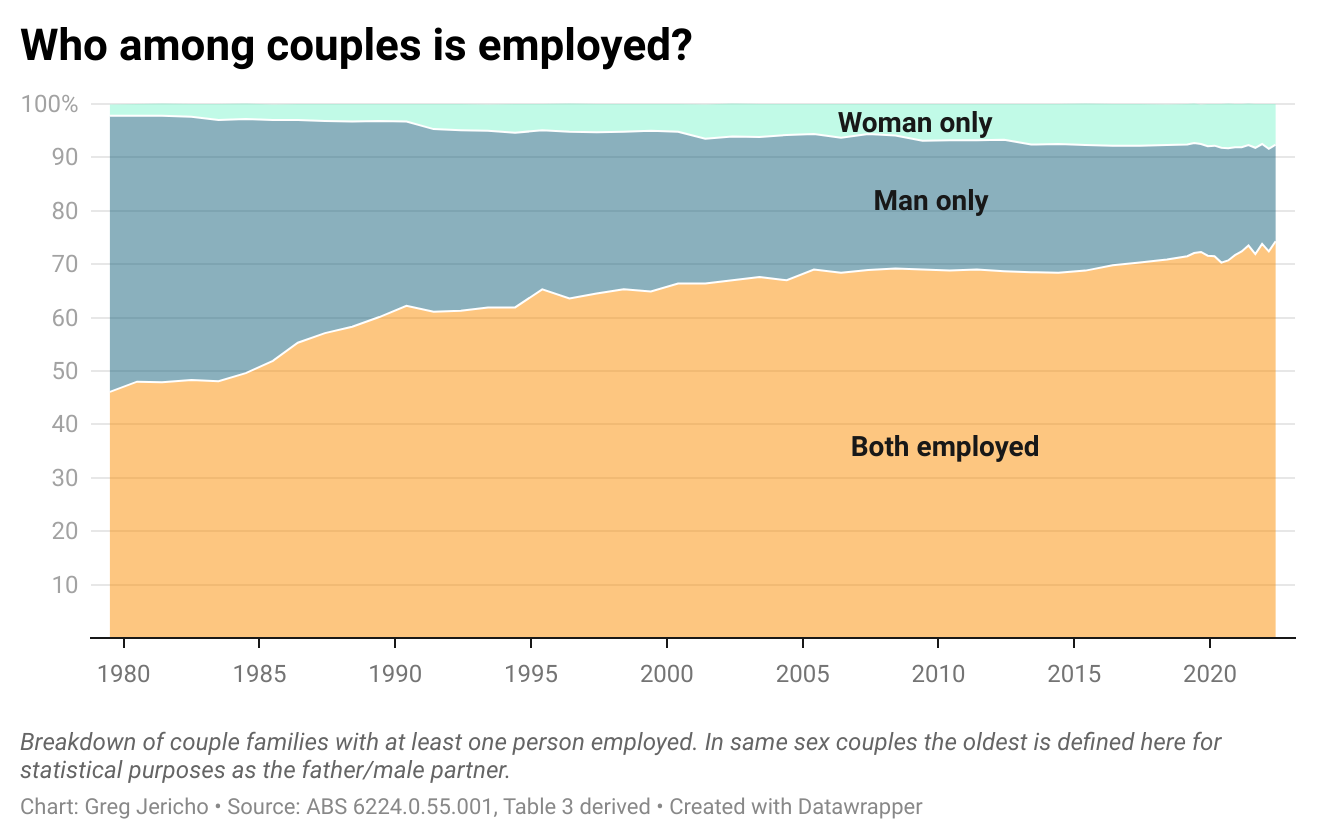The latest data from the Bureau of Statistics on families shows that more than ever before couples with dependants are both working.
Labour market policy director, Greg Jericho, notes in his Guardian Australia column that over the past 40 years the make-up of families has shifted dramatically from ones with just one parent working to now more than 70% having both partners in employment.
While this has mostly come from the great gains made by women since the 1970s that have seen changes to discrimination laws, child care and also societal norms to allow women to participate in paid work even once they have had children, it also highlights the rising cost of living pressures faced by most families.
The times when a family on one income could be expected to buy a house are long gone. But the decade of weak wage growth and recent falls in real wages make living on one wage even more difficult.
But the data reveals that men are still more likely to be the sole breadwinner and it confirms the labour force data that shows women remain much less likely than men to work full-time. This is a major reason why women in over 90% of occupations earn on average less than do men. It means that women remain at a heightened risk of income loss in the event of relationship breakdowns that can severely affect their standard of living, especially in retirement.
The data also reveals that women remain very much the most likely parent in sole-parent families. Given the laws that now see such parents move from the parenting allowance to the lower-paying Jobseeker once their youngest child turns 8, this highlights the precarious nature over 800,000 women face as they attempt to survive as the sole parent.

You might also like
“Right to Disconnect” Essential as Devices Intrude Into Workers’ Lives
Australia’s Parliament is set to pass a new set of reforms to the Fair Work Act and other labour laws, that would enshrine certain protections for workers against being contacted or ordered to perform work outside of normal working hours. This “Right to Disconnect” is an important step in limiting the steady encroachment of work
On International Women’s Day: How the Fair Work Commission Can Really Take On the Gender Pay Gap
On occasion of International Women’s Day, the Centre for Future Work’s Senior Researcher Lisa Heap reviews the opportunities to use recent industrial relations reforms to more ambitiously address Australia’s gender pay gap.
New laws for ‘employee-like’ gig workers are good but far from perfect
The Workplace Relations Minister Tony Burke has described proposed new laws to regulate digital platform work as building a ramp with employees at the top, independent contractors at the bottom, and gig platform workers halfway up. The new laws will allow the Fair Work Commission to set minimum standards for ‘employee-like workers’ on digital platforms.


